Do you have a sewing machine that needs repair? Sewing machines can be tricky to fix, but with the right tools and instructions, you can easily get your machine back up and running. This blog post will provide you with a step-by-step guide on how to fix sewing machine. We will also provide you with some tips on how to prevent common problems from occurring. So, if your sewing machine is giving you trouble, be sure to read this blog post.
Summary: If you are having problems with your sewing machine, there are a few things that you can do to fix it. First, make sure that the machine is properly plugged in and that the needle is moving. If the needle isn’t moving, try resetting the machine. Next, check the thread tension. Sometimes, the thread can become tangled or knotted, preventing the needle from moving. Finally, if the machine still won’t sew properly, you might need to replace the sewing machine parts.
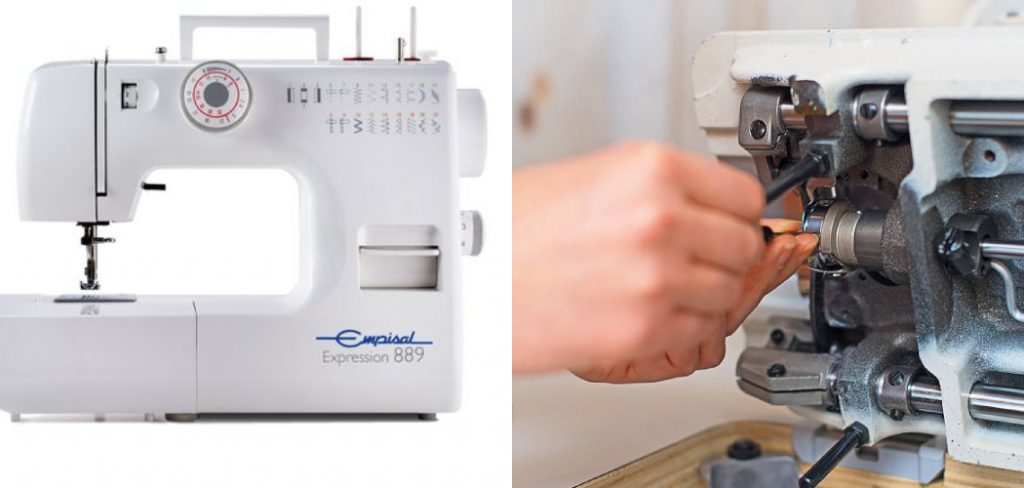
Some Common Problems for a Sewing Machine?
There are a few common problems that can occur with a sewing machine. These problems include:
The Sewing Machine Needle Is Not Moving
This is one of the most common problems with a sewing machine. If the needle is not moving, it is likely due to a problem with the timing belt. The timing belt is responsible for moving the needle up and down. If the timing belt is not working properly, the needle will not move.
The Sewing Machine Is Not Stitching Properly
If the sewing machine isn’t stitching properly, it’s likely because the tension is off. The tension controls how much thread is used when stitching, so if it’s too loose, the stitches will be loose, and if it’s too tight, the stitches will be too tight.
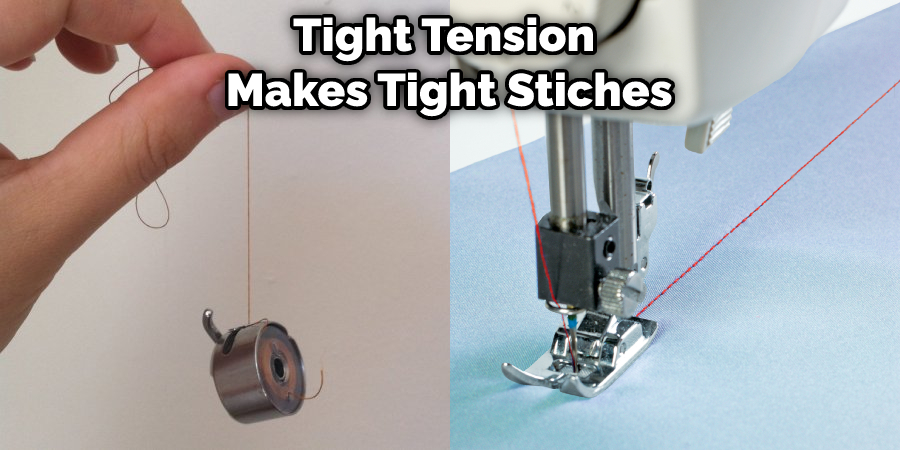
The Sewing Machine Is Not Feeding the Fabric Properly
If the sewing machine isn’t feeding the fabric properly, it’s probably because there’s something wrong with the feed dog. The feed dog is the part of the machine that moves the fabric through. If it’s not working right, the fabric won’t move.
The Sewing Machine Is Making Noise
If the sewing machine is making noise, it is probably because the bearings are worn out. The bearings are what help the moving parts of the machine move smoothly. If they are worn out, the machine will make noise.
The Sewing Machine Is Vibrating
If the sewing machine vibrates, it is likely due to a problem with the motor. The motor is responsible for moving the needle up and down. If the motor is not working properly, the machine will vibrate. If the sewing machine is not properly threaded, it will also vibrate. Make sure that the needle is properly threaded before starting to sew.
The Sewing Machine Is Not Turning On
If the sewing machine is not turning on, it is likely due to a problem with the power cord. The power cord is responsible for supplying power to the machine. Therefore, the machine will not turn on if the power cord is not working properly.
A Complete Guide on How to Fix Sewing Machine
1. Check the Power Cord
The first thing you should do if your sewing machine is not working correctly is to check the power cord. Next, make sure the power cord is plugged into a working outlet. Use a multimeter to test the outlet if you are unsure. If the power cord is damaged, you will need to replace it.
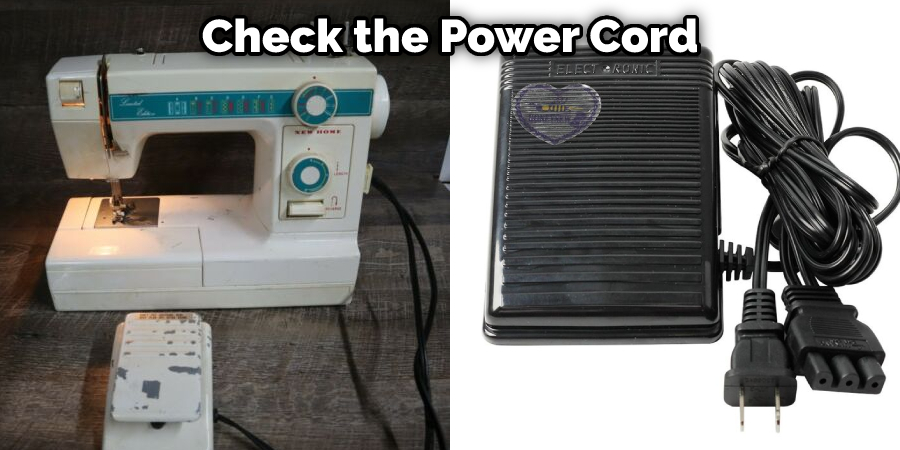
2. Check the Bobbin
The next thing you should check is the bobbin. Make sure the bobbin is inserted properly and that there is no thread wrapped around it. If the bobbin is jammed, you will need to remove it and clear the jam. Use a small brush to clean the area around the bobbin before reinserting it.
3. Check the Needle
If the needle is bent or broken, you’ll need to replace it. Always check to make sure the needle is inserted properly too – if it’s not, the machine won’t work right. Use a magnifying glass to inspect the needle.
4. Check the Threading
The next thing you should check is the threading. If the thread is not properly threaded, it can cause all sorts of problems with your sewing machine.
To fix this, first, make sure that the needle is in the correct position. Then, take a look at the machine’s manual to see how to thread the machine correctly. Once the machine is threaded, try sewing a few stitches to see if that fixes the problem. If the thread is still not working properly, it could be because the tension is off. To fix this, refer to your sewing machine’s manual to see how to adjust the tension. Try sewing a few stitches again once you’ve adjusted the tension to see if that fixes the problem.
5. Oil the Machine
If your sewing machine is making noise or not working correctly, it could be because it needs to be oiled. First, you should refer to your sewing machine’s manual to see where the oiling points are located. Once you have found them, use a few drops of sewing machine oil and apply it to these areas. It would be best if you then ran the machine for a few minutes to help distribute the oil evenly.
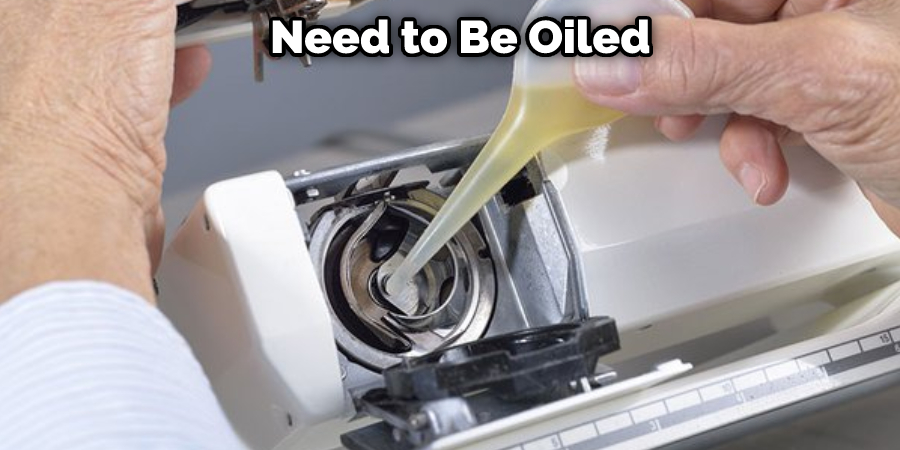
6. Adjust the Tension
If the tension on your sewing machine is not set correctly, it can cause many problems. The first thing you should do is check the manual to see how to adjust the tension on your machine. If you don’t have the manual, you can usually find it online. To test the tension, sew a few stitches on a scrap piece of fabric.
Adjust the tension accordingly if the stitches are too loose or too tight. To adjust the tension, turn the knob or lever until you get the desired result.
7. Adjust the Stitch Length
If the stitch length on your sewing machine is not set correctly, it can also cause problems. To adjust the stitch length, first, consult your sewing machine manual. Most machines will have a knob or lever that allows you to adjust the stitch length. You may need to consult your sewing machine manual if you can’t find the adjustment knob or lever. Once you’ve found the correct adjustment knob or lever, turn it until the stitch length is correct.
8. Replace the Timing Belt
If your sewing machine is not working correctly, the timing belt may blame you. The timing belt is responsible for keeping your machine’s moving parts in sync. If the timing belt is damaged, you will need to replace it. You can usually find a replacement timing belt at your local sewing machine store.
9. Clean the Machine
If your sewing machine is not working correctly, it could be because it is dirty. Over time, lint and dust can build up inside the machine and cause problems. To clean your machine, first, consult the manual to see where the different parts are located. Once you have found the parts, use a brush or compressed air to remove any lint or dust. It would help if you also oiled the machine after you have cleaned it to help keep it running smoothly.
10. Replace the Bearings
The bearings may be to blame if your sewing machine is not running smoothly. The bearings are responsible for keeping your machine’s moving parts in place. If the bearings are damaged, you will need to replace them. To do this, you will need to remove the damaged bearings and install new ones. You can find replacement bearings at most sewing machine stores.
11. Reset the Machine
If your sewing machine is still not working correctly, you may need to reset it. To do this, consult your machine’s manual. Each machine is different, so the steps to resetting will vary. You’ll need to unplug the machine, remove the faceplate or control panel, locate the reset button, and press it. Once the machine is reset, reattach the faceplate or control panel and plug it back in. Try sewing again to see if the machine is working properly.
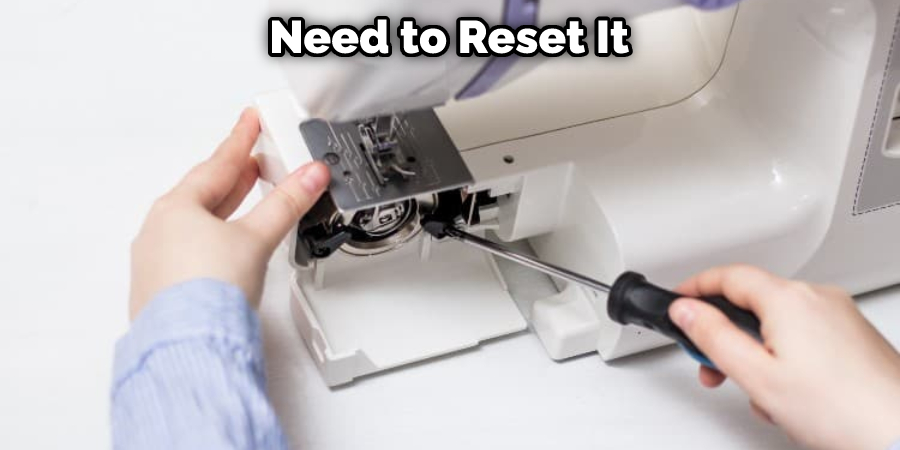
12. Contact Customer Service
If you’ve tried all of the above steps and your sewing machine still isn’t working, you may need to contact customer service. The customer service representative will be able to help you troubleshoot the problem and may even be able to send you replacement parts.
How Much Does It Cost to Fix Sewing Machine
The cost of repairing a sewing machine will vary depending on the problem. In most cases, you can expect to pay between $50 and $100. However, if the problem is more severe, it could cost up to $200 to fix. If you need to replace parts, the cost will also increase. For example, a new timing belt could cost around $20, while new bearings could cost around $30.
Tips and Warnings on How to Fix Sewing Machine
Tips:
- Be sure to identify the problem before attempting to fix it.
- Check the machine’s manual for troubleshooting tips specific to your model.
- Always unplug the machine before working on it.
- Inspect the machine regularly and perform preventive maintenance to avoid serious issues.
- Keep a supply of spare parts on hands, such as replacement needles and Bobbins.
Warnings:
- Do not attempt to repair the machine if you are not qualified or experienced.
- Never operate the machine without proper safety precautions in place.
- Wear appropriate protective gear, such as gloves and safety glasses, when working on the machine.
- Never force any part of the machine; if something is stuck, seek professional help.
Frequently Asked Questions
What Causes a Sewing Machine Not to Stitch?
There are a few things that can cause a sewing machine not to stitch, and the most common is jamming. When the fabric gets caught in the gears of the machine, it becomes difficult for it to move and resulting in skipped stitches. Other causes of malfunction include bad thread tension, incorrectly twisted needles, worn out or dirty parts of the machine, clogged bobbin cases, or some other part that feeds material into your Machine.
Can a Sewing Machine Be Fixed?
Most sewing machines can be fixed, but it will likely require the help of a technician. Some basic repairs that may be done include fixing loose stitches, adjusting bobbin tension, and replacing worn parts. In some cases, adjustments to the machine’s built-in software might also be necessary.
It is important to note that not every sewing machine is compatible with each type of thread or fabric–so consult your manual before attempting any repairs. And if you do end up needing professional assistance, make sure to find a reputable business that specializes in repairing sewing machines.
Why is My Sewing Machine Not Picking Up the Bobbin Thread?
This is a question that many sewers experience at some point. There are a few possible explanations for why your sewing machine may not be picking up the bobbin thread properly. One possibility is that the spool has become full and needs to be replaced. If this is not an option, you might need to adjust the tension on the threads or change out the spool. And finally, if you’re using new fabric, it may take time for it to properly stretch so that it can pick up enough thread during stitching. So, keep an eye on your stitches and check things like tension and fabric quality until everything settles down!
Do You Fix a Sewing Machine That Keeps Jamming?
Unfortunately, if your sewing machine is keeping jamming, there’s not much that can be done other than getting a new one. However, if you know the causes of the machine’s issues and can address them before they turn into a bigger problem, you may be able to salvage the old one. Here are some tips to help you fix a sewing machine that keeps jamming:
- Clean the machine – Before anything else, make sure to clean the machine. Remove any built-up fabric or threads, and then run a mild soap solution through the machine using a cloth. Be sure to do this every time you use the machine to prevent jams.
- Check for bent needles – If your needles are bent, they’ll be unable to pierce the fabric properly and will result in jams. As soon as you notice this issue, replace all of your needles with new ones.
- Clear out the bobbin case – If there’s anything in the bobbin case that’s preventing it from moving smoothly, it will cause jams. Remove all of the excess fabric, lint, and residue using a vacuum cleaner before re-inserting the bobbins into the case.
- Check for obstructions – If there are any objects in the way of the needle threading itself through the fabric correctly, they will cause jams. Remove these objects using a pointed object such as a needle nose pliers or an eyeglass screwdriver before continuing Sewing mode.
Hopefully, these tips will help solve your sewing machine jamming issues! If not, don’t hesitate to contact us for further assistance!
Conclusion
So, there you have it, your guide on how to fix sewing machine. If you follow these simple steps and are persistent in your efforts, you will be able to fix your machine like a pro. Have any questions or need some help? Leave us a comment below, and we’ll get back to you as soon as possible. Happy sewing!
You Can Check It Out to Fix a Collar on A Polo Shirt
